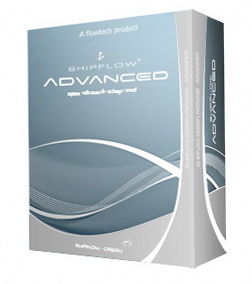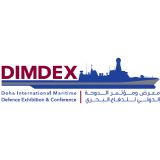|
|
|
| SHIPFLOW Design
|
|
Potential flow, thin boundary layer and RANS solvers with the SHIPFLOW Design pre and post processor.
Modules
SHIPFLOW DESIGN
integrated pre and post processor. - subset of Friendship Framework.
Computer aided design (CAD) kernel
Built in optimisation methods (Lackeby shift, Ensemble Investigation, NelderMeadSimplex)
REPORTING
Automatically generated report on html format created after each SHIPFLOW run.
Report contains customizable standard images and tables.
Format similar to and easily comparable to tank test report.
XPAN
World's most powerful free surface potential flow panel method.
Linear or non-linear free surface boundary conditions
First or higher order panels and singularity distributions.
Non-lifting or lifting flows
Computes waves, wave resistance, lift, induced resistance, sinkage & trim and pressure distribution
Threaded to speed up computations on multi core machines
XBOUND
Computes the thin boundary layer on the hull.
Momentum integral equations
Small cross-flow approximation
Laminar and turbulent
Transition computed or fixed
Computes the thin boundary layer
XMESH
Creates the mesh used in XPAN and XBOUND.
Uses offsets as input
Automatic offset generation from STL or IGES format.
Various hull configuration types: monohull, catamaran, trimaran, twinskeg...
XCHAP
RANS method
Fully coupled
k-w SST and explicit algebraic stress model (EASM)
Multi-block overlapping grids.
Finite volume formulation
Propeller by internal lifting line or interface to external propeller programme •• iteratively linked.
Computes viscous resistance, wake flow, propeller/hull interaction.
• Double Model or Volume of Fluid RANS method for simulation of Viscous Free Surface.
Threads and MPI are implemented to speed up computations on multi core machines and clusters of machines.
XGRID
Creates the grid used in XCHAP and XVOF
Uses offsets as input
Automatic offset generation from STL or IGES format.
Various hull configuration types: monohull, catamaran, trimaran, twinskeg...
POTENTIAL FLOW AND THIN BOUNDARY LAYER METHOD
Potential flow methods are a very powerful tool for optimising, for example forebodys of ships. The power lies in the accuracy in ranking design modifications in combination with the short computation time. The short computation time makes it possible to try many different variants or to set up a parametric optimisation that will finish within reasonable time.
Combining the potential flow method in XPAN with frictional resistance from the thin boundary layer method in XBOUND will include the viscous effects.
CHAPMAN- ADVANCED VISCOUS FLOW SOLUTION
Detailed predictions of the wake are required for design of propellers and for looking at the interaction with appendages. This calls for an advanced viscous flow method. SHIPFLOW uses an unconventional technique, which combines a very stable numerical scheme with other advanced features, such as a turbulence model especially developed for ship stern flow and a novel gridding technique. The viscous flow RANS solver, XCHAP can be run either as a double model solution or with a prescribes free surface from XPAN. The Volume of Fluid RANS solver, XVOF, is used where there are viscous effects on the free surface. Depending on the type of ship, speed and what effects are studied the user can choose which modules to use.
To enhance the stability of the solution the differential equations are discretized considering the magnitude and direction of the flow of information and non-physical fluctuations in the solution are suppressed. Full scale computations using this technique can be made without problems. The default turbulence model is of the algebraic stress type (EASM), and has proven to be especially accurate for stern flow predictions.
THREADING
SHIPFLOWs XCHAP module is prepared for use on multi-core machines and clusters by using both threading and MPI. Using MPI on a cluster of machines will greatly speed up computations and is especially useful for large cases like, for example, self propulsion, VOF etc.
SHIPFLOWS XPAN module is prepared for use on multi-core machines by using threading. |
|
| Related Products |
|  YWC 0.5 oil water separator YWC 0.5 oil water separator
China Century Marine Equipment Co., Ltd
YWC Series 15ppm Bilge Separator (15ppm Bilge Separator) is a kind of environmental protection product designed based on International Maritime Organization ... | |  RSCY-A4 life jacket RSCY-A4 life jacket
China Century Marine Equipment Co., Ltd
SOLAS Life Jacket Used for international & inland sea-going ships & offshore installation.
Buoyancy: Provide the minimum 147N
Standard: the latest SOLAS ... | |  BNWAS BW-800 Bridge Navigational Watch Alarm System BNWAS BW-800 Bridge Navigational Watch Alarm System
Daniamant ApS
The purpose of a BNWAS
The purpose of a BNWAS Bridge Navigational Watch Alarm System is to monitor bridge activity and detect operator disability which ... | |  Lifejacket lights Lifejacket lights
Daniamant ApS
All Daniamant Lifejacket lights are designed to deliver, as a minimum standard, the 0.75cd output specification and 8 hour duration required by IMO SOLAS ... | |  Tron TR20 GMDSS Handheld VHF radio Tron TR20 GMDSS Handheld VHF radio
Jotron AS
Rugged VHF radio for emergency situations and regular use for onboard communications. Easy to operate by one hand or wearing gloves. Both display and ... |
|
|
|
|



 YWC 0.5 oil water separator
YWC 0.5 oil water separator RSCY-A4 life jacket
RSCY-A4 life jacket BNWAS BW-800 Bridge Navigational Watch Alarm System
BNWAS BW-800 Bridge Navigational Watch Alarm System Lifejacket lights
Lifejacket lights Tron TR20 GMDSS Handheld VHF radio
Tron TR20 GMDSS Handheld VHF radio



